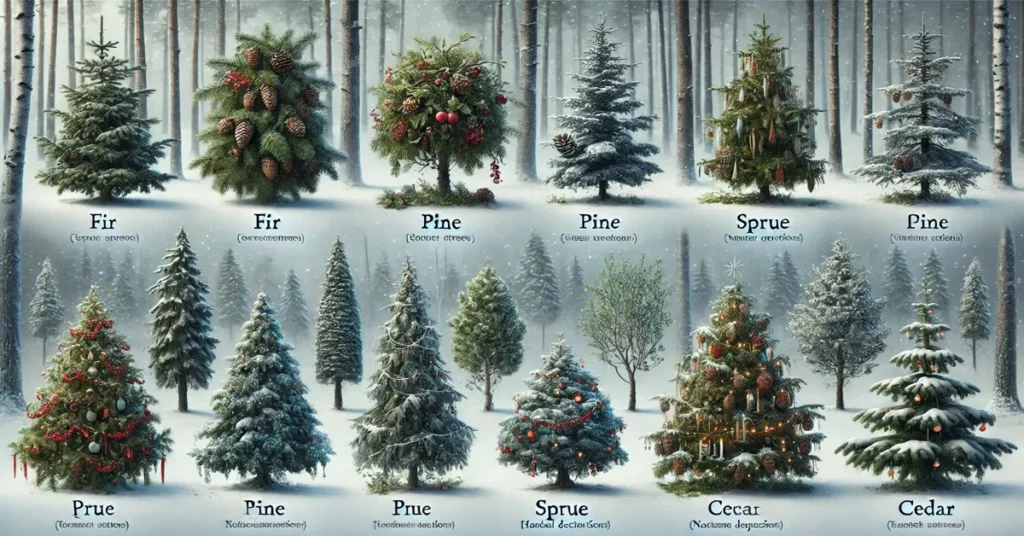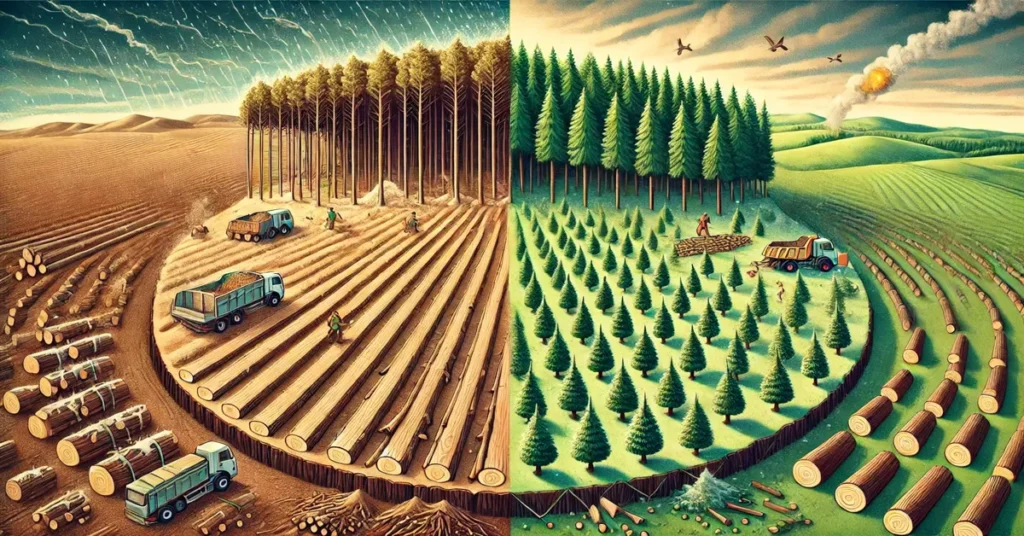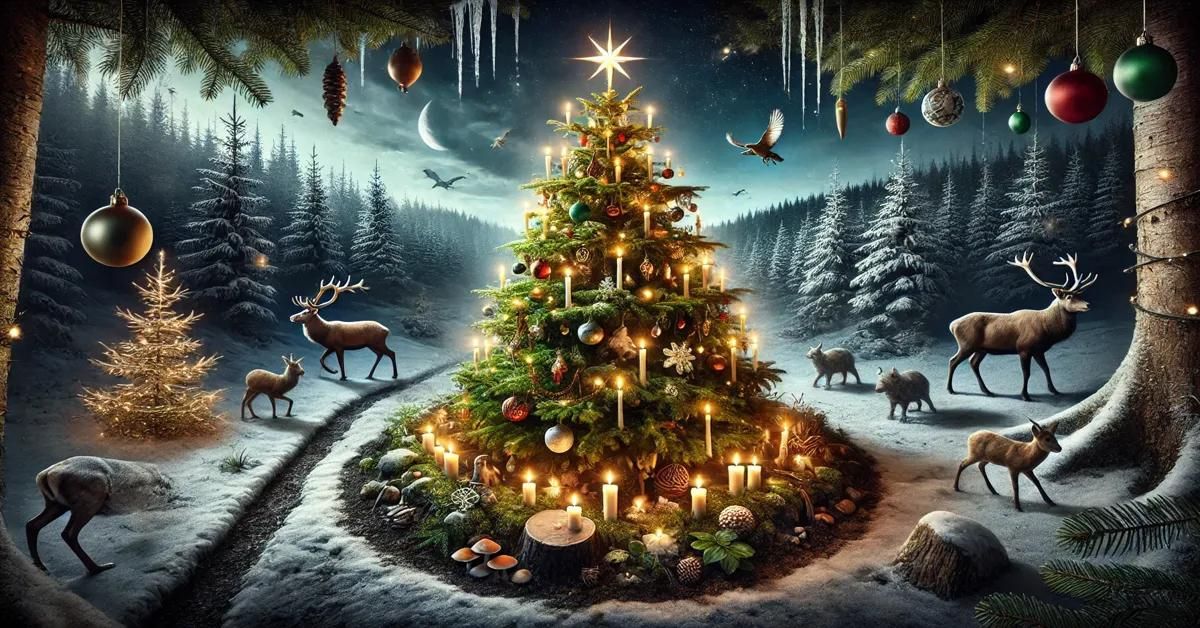Introduction
The Yule tree, often synonymous with the Christmas tree in modern culture, holds deep historical and ecological significance. Traditionally associated with the Yule festival, which celebrates the winter solstice, this evergreen symbol has roots that extend into various cultures, mythologies, and environmental practices. As the holiday season approaches, understanding the Yule tree’s origins, cultural significance, and environmental impact becomes increasingly relevant, especially in discussions surrounding sustainability and ecological health.
This article delves into the multifaceted dimensions of the Yule tree, exploring its historical context, the types of trees commonly used, the environmental implications of Christmas tree farming and harvesting, and sustainable practices that can enhance its role in contemporary society. By examining these aspects, we aim to foster a deeper appreciation for the Yule tree and encourage environmentally conscious choices during the festive season.
1. Historical Background of the Yule Tree
The Yule tree has a rich history that dates back centuries, interwoven with ancient pagan traditions, Christian customs, and cultural adaptations. Its significance has evolved, but the themes of renewal, celebration, and connection to nature remain constant.

1.1. Pagan Roots and Winter Solstice Celebrations
The origins of the Yule tree can be traced back to pre-Christian winter solstice celebrations among various European pagan cultures. The winter solstice, occurring around December 21st, marks the longest night of the year and the gradual return of longer days.
- Evergreen Symbolism: Evergreens, such as fir and pine trees, were revered for their resilience in harsh winter conditions. They symbolized life, renewal, and the promise of spring, serving as a reminder that life endures even in the coldest months.
- Yule Traditions: The Yule festival celebrated the rebirth of the sun, and various customs, including the Yule log and the decoration of evergreen boughs, were practiced to honor nature’s cycles. It emerged as a central element in these celebrations, often adorned with offerings to the spirits of nature.
1.2. The Advent of Christmas Traditions
With the spread of Christianity, many pagan customs were adapted into Christian traditions. It became intertwined with Christmas celebrations, symbolizing hope, joy, and the spirit of giving.
- Advent of the Christmas Tree: The use of evergreen trees in Christian households became common in the 16th century, particularly in Germany. The first documented Christmas tree is believed to have been erected in Strasbourg in 1605. The tree was often adorned with candles, ornaments, and edible decorations, reflecting the festive spirit of the season.
- Global Adoption: As European immigrants spread to different parts of the world, the tradition of the Christmas tree evolved. It found its way into North American culture in the 19th century, becoming a central symbol of the holiday season across various cultures.
2. Types of Yule Trees
Several tree species are commonly used as It, each with distinct characteristics, scents, and ecological considerations. Understanding these types can inform choices for sustainable tree selection.

2.1. Common Yule Tree Species
Various evergreen species are chosen for Yule trees based on their aesthetic qualities, fragrance, and ability to retain needles. Some of the most popular species include:
- Norway Spruce (Picea abies): Known for its traditional conical shape and strong branches, Norway spruce is a classic choice for Yule trees. Its pleasant fragrance and needle retention make it popular, though it may shed needles quickly in warmer indoor environments.
- Fraser Fir (Abies fraseri): Valued for its durability and fragrant needles, the Fraser fir has become a favorite among many families. Its strong branches can support heavy ornaments, and its needles tend to stay on the tree longer than other species.
- Balsam Fir (Abies balsamea): The Balsam fir is renowned for its rich scent and soft, flexible needles. It is often considered one of the best choices for Yule trees due to its pleasant aroma and well-balanced shape.
- Eastern White Pine (Pinus strobus): With its long, soft needles and airy appearance, Eastern white pine offers a unique aesthetic. Its flexible branches make it easy to decorate, although it may require more watering to stay fresh.
- Blue Spruce (Picea pungens): Recognizable by its striking blue-gray foliage, the Blue spruce adds a distinctive touch to holiday decor. Its sturdy branches can hold ornaments well, but its needles can be sharp.
2.2. Regional Preferences
The choice of Yule tree species can vary based on regional availability and climate conditions. In certain areas, local species may be preferred, reflecting the ecological diversity of the region.
- Sustainability of Local Species: Opting for locally sourced Yule trees can reduce the carbon footprint associated with transportation and promote the conservation of native ecosystems. Many regions have local farms that specialize in growing Yule trees, fostering a sustainable market.
3. Environmental Impact of Yule Tree Cultivation
The cultivation and harvesting of these can have significant environmental implications, ranging from land use practices to carbon sequestration. Understanding these impacts is essential for making informed choices about Yule trees.

3.1. Tree Farming Practices
Its farming has grown into a substantial agricultural industry, with tree farms employing various cultivation techniques. The environmental effects of these practices can vary widely.
- Sustainable Practices: Many of farms implement sustainable practices such as crop rotation, integrated pest management, and organic fertilizers. These methods promote soil health, reduce chemical runoff, and minimize negative impacts on surrounding ecosystems.
- Deforestation Concerns: In some regions, the conversion of natural forests to plantations raises concerns about biodiversity loss and habitat destruction. Clear-cutting practices can disrupt local ecosystems, threatening wildlife that relies on forested habitats.
3.2. Carbon Sequestration and Air Quality
Evergreen trees play a crucial role in carbon sequestration, absorbing carbon dioxide from the atmosphere and releasing oxygen. Yule tree farms can contribute to mitigating climate change by sequestering carbon.
- Carbon Storage: The growth of Yule trees contributes to carbon storage in biomass and soil. A well-managed Yule tree farm can act as a carbon sink, offsetting greenhouse gas emissions and improving air quality.
- Oxygen Production: As it grow, they produce oxygen, which is essential for maintaining healthy ecosystems and supporting life on Earth. The presence of Yule tree farms can enhance local air quality, benefiting nearby communities.
4. The Lifecycle of Yule Trees: From Farm to Festivities
Understanding the lifecycle of Yule trees—from cultivation to disposal—can provide insights into their environmental impact and sustainability.

4.1. Cultivation and Harvesting
Yule trees are typically grown on farms for several years before being harvested. The process involves careful planning and management to ensure healthy growth and sustainability.
- Planting and Care: Farmers plant Yule tree seedlings, which require attention to soil conditions, moisture levels, and pest management. Careful maintenance ensures strong growth and resilience against diseases.
- Harvesting: When it reach the desired height (usually 6 to 8 feet), they are harvested in a manner that minimizes damage to the surrounding environment. Sustainable harvesting practices involve cutting trees at the base without harming nearby trees.
4.2. Transportation and Sale
Once harvested, Yule trees are transported to retail locations, often requiring careful handling to maintain their freshness.
- Carbon Footprint of Transportation: The transportation of Yule trees can contribute to greenhouse gas emissions, particularly if trees are shipped over long distances. Choosing locally sourced Yule trees can help reduce the environmental impact associated with transportation.
4.3. Display and Care
During the holiday season, they are brought into homes and decorated. Proper care is essential to keep the tree fresh and vibrant.
- Watering and Maintenance: It should be watered regularly to maintain their freshness. A well-hydrated tree can retain its needles and fragrance longer, reducing the likelihood of premature disposal.
- Eco-friendly Decorations: Choosing environmentally friendly decorations, such as natural ornaments or LED lights, can enhance the sustainability of the holiday experience.
4.4. Disposal and Recycling
At the end of the holiday season, the disposal of it presents an opportunity for environmental stewardship. Responsible disposal methods can minimize waste and promote sustainability.
- Composting: One of the most environmentally friendly options for disposing of it is composting. Trees can be chipped into mulch or composted, returning nutrients to the soil and supporting local ecosystems.
- Recycling Programs: Many communities offer recycling programs for them, allowing residents to drop off their trees for proper disposal. These programs often turn the trees into mulch or wood chips for public parks and gardens.
5. The Yule Tree in Modern Society
As society evolves, so do traditions surrounding the Yule tree. The significance of the it continues to grow, prompting discussions about sustainability, cultural heritage, and the environment.

5.1. Cultural Significance and Adaptation
The Yule tree remains a symbol of celebration and togetherness during the holiday season. Its cultural significance is reflected in various customs and practices.
- Cultural Variations: Different cultures have adapted the tradition of the Yule tree to reflect their unique customs. In some Scandinavian countries, the Yule tree is decorated with edible ornaments, while in others, it may be adorned with lights and ornaments symbolizing blessings and good fortune.
- Inclusivity and Diversity: As societies become more diverse, the Yule tree represents a shared symbol of joy and connection. Many families incorporate elements from various cultural traditions, creating a rich tapestry of celebration
5.2. Environmental Awareness and Sustainability
With growing awareness of environmental issues, many people are re-evaluating their holiday traditions, including the choice of a Yule tree. This has led to an increased focus on sustainability and eco-friendliness in holiday practices.
- Sustainable Choices: Many consumers now seek sustainably sourced them, looking for farms that practice eco-friendly cultivation techniques. This trend not only supports local economies but also encourages responsible land management practices.
- Alternative Options: For those concerned about the environmental impact of cutting down a live tree, there are alternatives such as artificial trees or potted trees that can be kept and replanted after the holidays. Each option comes with its own environmental considerations, making informed choices essential for sustainability.
5.3. Educational Opportunities
The Yule tree also provides an opportunity for education about environmental stewardship and the importance of trees in ecosystems. Various programs and initiatives use the symbolism of the Yule tree to promote environmental awareness.
- School Programs: Many schools incorporate lessons about the ecological significance of trees and forests during the holiday season. This education helps foster a sense of responsibility among young people regarding environmental conservation.
- Community Workshops: Workshops that focus on sustainable decorating, tree care, and eco-friendly practices during the holiday season can empower communities to make more conscious choices. These initiatives promote collective action toward sustainability.
6. The Future of the Yule Tree
As we look ahead, the future of this tradition will likely evolve in response to changing societal values, environmental concerns, and cultural adaptations.

6.1. Integration of Technology
Advancements in technology may play a role in shaping how people celebrate with Yule trees. From innovative decorations to smart tree care solutions, technology could enhance the experience of using a Yule tree during the holidays.
- Smart Tree Care: Smart watering systems and sensors could help ensure Yule trees remain hydrated and healthy while in homes. This technology can help reduce waste and prolong the life of the tree during the holiday season.
- Digital Decorations: With the rise of augmented reality and smart devices, digital decorations could provide a modern twist to the traditional Yule tree. Virtual ornaments and light displays could enhance the festive atmosphere while reducing physical waste.
6.2. Continued Advocacy for Sustainability
As environmental issues become more pressing, the advocacy for sustainable practices in Yule tree cultivation and holiday celebrations will likely continue to grow.
- Promoting Eco-Friendly Practices: Organizations focused on environmental conservation can encourage sustainable Yule tree farming, responsible consumer choices, and education about the ecological impact of holiday traditions.
- Support for Local Farmers: The push for sustainability may lead to increased support for local Yule tree farms that prioritize environmentally friendly practices. Consumers are increasingly interested in knowing the source of their trees and supporting local economies.
6.3. Cultural Evolution
The Yule tree tradition will continue to adapt as cultures and societies evolve. This cultural evolution may lead to new customs, practices, and meanings associated with the Yule tree.
- Embracing Diversity: As societies become more diverse, the Yule tree can serve as a unifying symbol that embraces various cultural traditions. This inclusivity can enrich the holiday experience and foster community connections.
- Personalized Traditions: Families may develop their own unique Yule tree traditions, incorporating elements that reflect their values and beliefs. This personalization can create deeper connections to the holiday season and the natural world.
Conclusion: Celebrating the Yule Tree Responsibly
The Yule tree is more than just a festive decoration; it embodies rich cultural traditions, ecological significance, and the promise of renewal. As we celebrate the holiday season, it is essential to recognize the environmental implications of our choices and to promote sustainable practices that honor both the Yule tree and the ecosystems it represents.
By understanding the history, significance, and ecological impact of the Yule tree, we can make informed decisions that enhance our holiday celebrations while caring for the environment. As we look to the future, embracing sustainability, fostering education, and celebrating cultural diversity will ensure that the tradition of the Yule tree continues to thrive in a manner that respects and nurtures our planet.
Ultimately, the Yule tree symbolizes the beauty of nature, the spirit of giving, and the hope for a brighter, more sustainable future for generations to come. Let us cherish this tradition and commit to preserving the natural world that provides us with so much joy during the holiday season and beyond.
Read More: The Environmental Niche of the Mountain Oak: Ecology, Adaptations, and Role in Ecosystems

